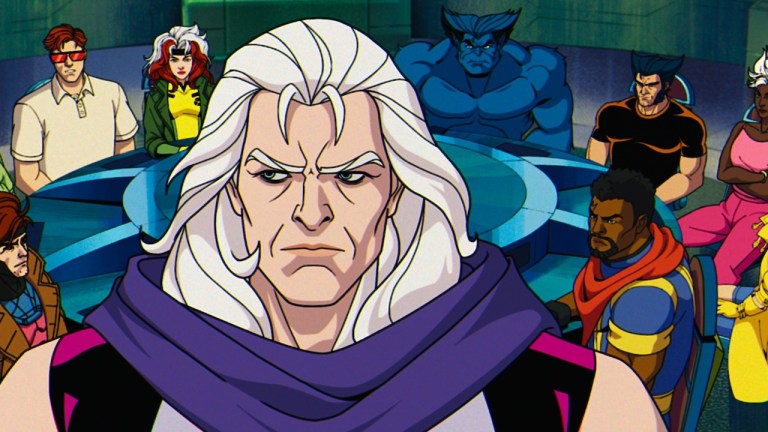X-Men ’97 Episode 8 Just Proved Why Magneto Was Right
"Magneto is Right" has a long history before showing up on X-Men '97, one that goes back to a 20-year-old Grant Morrison story.

This post contains spoilers for X-Men ’97 episode 8.
“Magneto was right.” That phrase, spoken by Val Cooper at the end of the eighth episode of X-Men ’97 “Tolerance is Extinction Part One,” sent shivers down the spines of everyone watching. The extreme intolerance of humans like Bastion shattered Xavier’s dream, suggesting that humans and mutants could never, ever co-exist. The humans just won’t let the mutants be.
Before that statement occurred to Val Cooper, it appeared as a T-shirt. Specifically, a T-shirt worn by Quentin Quire, an incredibly powerful and incredibly condescending teen who attended Xavier’s School for Gifted Children. In New X-Men #135 (2003), written by Grant Morrison and penciled by Frank Quitely, Quire completes a transformation many of us experienced, from shy nerd to condescending punk. He dons an outfit to match, consisting of died purple hair, hip spectacles, and a T-shirt that read “Magneto Was Right.”
In its original usage, the phrase singaled the mutant’s shift to pop-culture icons. The shirt mimics the design of Che Guevara shirts popular in the early 2000s. These shirts were common among American teens who would soon embrace capitalism, and even then reduced revolutionary struggle to a brand and slogan.
For all that Morrison did right in their take on the X-Men, they set back all of the character development that Chris Claremont and others did with the Master of Magnetism. Morrison saw Magneto not as a sympathetic figure driven to extreme ends by human oppression, but as a straight-forward villain, a doddering old man whose addiction to power, and a drug called Kick, made him embrace fascism, despite being a victim of fascism himself at the hands of the Nazis.
In the years that followed, however, the phrase gained power, first outside of the comics and then within them. In 2008, users launched the (now-defunct) website magnetowasright.com, which included essays and fan fiction defending the character’s perspective. Vendors online and at comic cons started selling their own versions of Quire’s shirt, and integrating designs based on other forms of propaganda art.
But within comics, it wasn’t Quentin Quire who proved Magneto was right, but his long-time nemesis: Cyclops. During the 2010s, Cyclops grew tired of the constant oppression he experienced at the hands of humans, and turned the X-Men into a more active force. They didn’t respond to threats against mutant-kind; they took out the potential threat before it could manifest. The approach split the X-Men in half, but brought Magneto back to side with Cyclops’s X-Men, even if Xavier’s one-time star pupil rubbed his success in his old enemy’s face.
Whatever one feels about Quentin Quire or Cyclops’s activist story arc, X-Men ’97 is proving “Magneto is Right” to be more than an ironic gag. For five seasons on X-Men: The Animated Series, Xavier and his students fought to protect humanity, ignoring the fact that they’re hated and feared to make the dream of co-existence into reality. And every single time, humans responded with more bigotry and violence.
X-Men ’97‘s midseason stunner “Remember It” puts the finest point on the issue. The mutants had their own country, where they could live without harming or bothering humanity in any way. And yet, the humans still attacked, killing the mutants simply because they could.
“Tolerance is Extinction, Part 1” is just the first part of the storyline, obviously, one that ends with Xavier returning to Earth and calling his X-Men to him. Perhaps, then, the final two episodes will prove the power of Xavier’s dream. But from where we sit at the end of the first part, it’s hard to see how Magneto could possibly be wrong.
X-Men ’97 is now streaming on Disney+.
